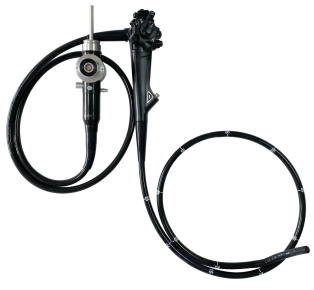Gastroscopy is a common medical procedure used to examine the inside of the digestive system, particularly the esophagus, stomach, and the first part of the small intestine (duodenum). This procedure is performed using a flexible tube with a light and camera at the end, allowing the doctor to see the images on a monitor. Recently, a new advancement in gastroscopy technology has emerged, known as gastroscopy with an auxiliary water channel.
Gastroscopy with an auxiliary water channel is a technique that involves the use of a specialized endoscope with an additional water channel. This channel allows the endoscopist to spray water directly onto the lining of the digestive tract during the procedure. The primary purpose of this auxiliary water channel is to provide better visualization and a clearer view of the area being examined.
One of the main benefits of gastroscopy with an auxiliary water channel is its ability to improve the quality of images captured during the procedure. By gently washing away mucus, food particles, and debris from the walls of the digestive tract, the water channel enhances visibility and allows the endoscopist to identify any abnormalities with greater accuracy.
Furthermore, the use of water during gastroscopy can help to reduce discomfort for the patient. The spraying of water onto the lining of the digestive tract can provide a soothing and lubricating effect, making the procedure more tolerable for the individual undergoing the examination.
In addition to its benefits for visualization and patient comfort, gastroscopy with an auxiliary water channel can also aid in the collection of tissue samples for biopsy. The water can help to clear the area of interest, allowing the endoscopist to obtain high-quality tissue samples for further analysis.
It’s important to note that gastroscopy with an auxiliary water channel is a safe and well-tolerated procedure when performed by a trained and experienced medical professional. However, as with any medical procedure, there are risks involved, such as perforation or bleeding, but these are rare.
In summary, gastroscopy with an auxiliary water channel represents a significant advancement in the field of endoscopy. By improving visualization, enhancing patient comfort, and aiding in tissue sample collection, this technique offers numerous advantages for both patients and healthcare providers.
If you are scheduled to undergo a gastroscopy, it’s essential to discuss the use of an auxiliary water channel with your healthcare provider. Understanding the technology and its potential benefits can help you feel more informed and confident about the procedure.
In conclusion, gastroscopy with an auxiliary water channel is a valuable tool in the diagnosis and management of digestive system disorders. It represents a leap forward in endoscopy technology and continues to improve the safety and effectiveness of gastroscopic examinations.
Post time: Dec-12-2023


